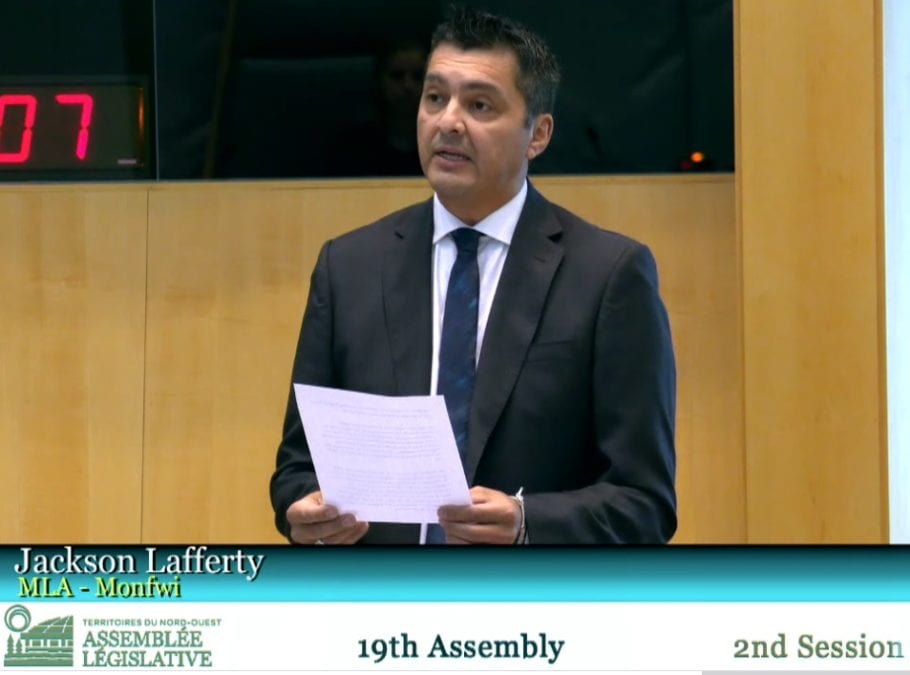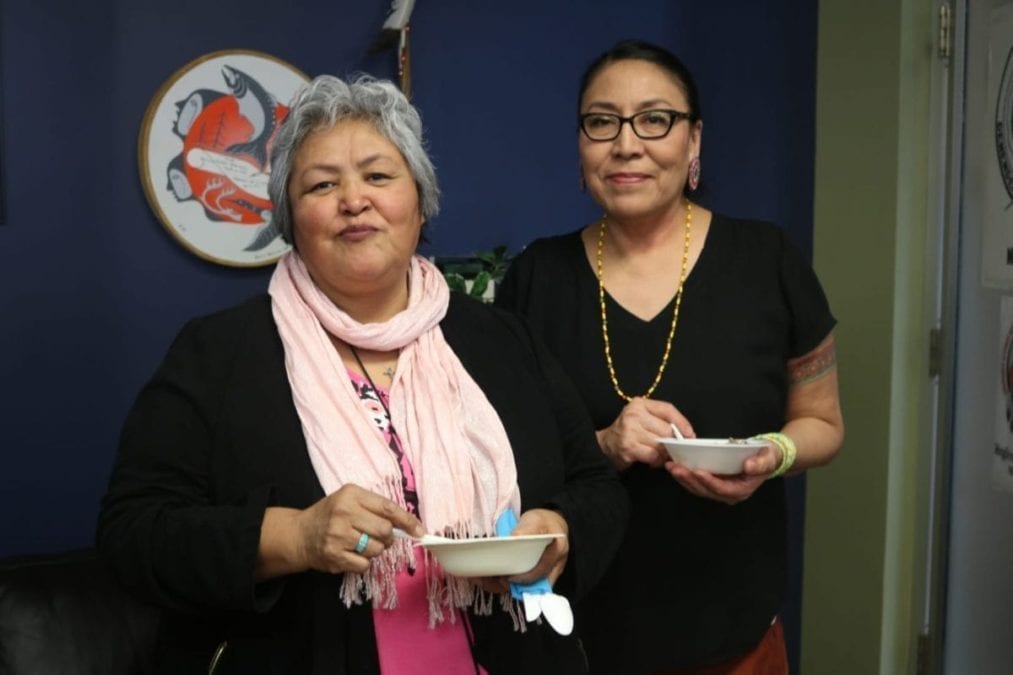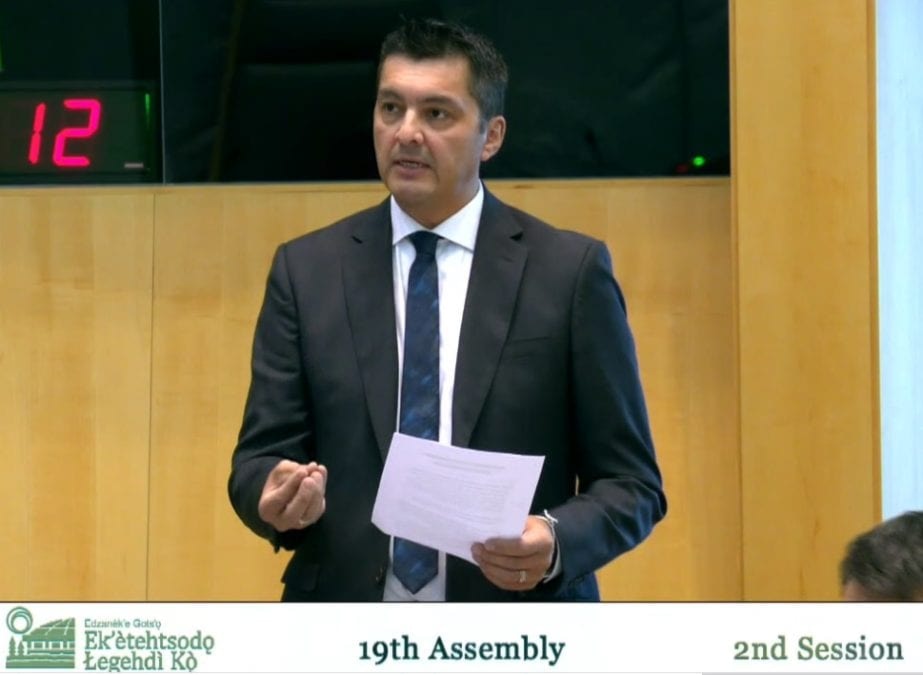The GNWT is offering programs aimed at Indigenous language revitalization but some Indigenous people wonder whether the initiatives are sufficient.
The Department of Education, Culture and Employment (ECE) has, over the last few months, opened applications for the Indigenous Languages Revitalization (ILR) Scholarship program and the Mentor-Apprentice Program (MAP).
ILR offers $5,000 scholarships for up to 10 students pursuing a post-secondary program focused on Indigenous language revitalization.

GNWT image
After it launched in 2018, a total of 29 students have received scholarships, said ECE spokesperson Jaimee Kepa.
The budget for the ILR program was increased to $100,000 this year, and new and current NWT interpreters and translators have been invited to apply to further boost their training and skills development.
Those students have enrolled in the University of Victoria's Certificate in Indigenous Language Revitalization and its Bachelor of Indigenous Language Revitalization program; and the University of Alberta’s Canadian Indigenous Languages and Literacy Development Institute summer session programs.
MAP pairs a fluent speaker with a student for one-on-one instruction, following a model that ECE calls a “celebrated best practice in Indigenous language instruction recognized worldwide as a successful method of reviving endangered languages.”
The program began in 2019 and for 2020-2021 it will be available for up to 10 pairs of mentors and apprentices from six regional Indigenous governments in Inuvialuktun, Gwich’in, North Slavey, Dene Zhatié, Tłı̨chǫ and Dene Suline.
Monfwi MLA Jackson Lafferty sees the ILR program as a good step forward and hopes that it can help foster a new generation of speakers who can take over when the current cohort of 33 interpreter/translators retire, which many will ready to do in a few years.
“It is very important that we have the continuation of interpretation services, the resource pool that we've had over the years since the 1990s, until today, and we don't seem to be producing enough language interpreters across the NWT,” said Lafferty, who regularly speaks in Tłı̨chǫ in the legislative assembly.
“We're fortunate that we have people that have been in the system for quite some time now. They were trained back in the 1990s when there was the language bureau. But those individuals are coming close to retirement, and we need to be ready for them. I don't think we are.”
With that goal in mind, he questions the effectiveness of the MAP initiative.
“It's been there some time now. But is it producing enough results, enough individuals coming out of the program to start interpreting? I'm not sure if it is, but we have to look at the overall programming that we're currently delivering – to train, to mentor, to give scholarships, to revive, revitalize our language. We have to set some programs that are strictly (geared) towards interpretation.”
Existing language programs aside, Lafferty thinks more should be done to use the knowledge and resources of the working interpreters before they retire. One possibility he suggested is interpreters mentoring more than one student at a time.
He also thinks more can be done to help young language students in their own communities.
“There's quite a few (youth) actually showing interest but there hasn't really been much program development within the communities,” he said. “We need to expand beyond Yellowknife. It could be a hub, but... we have 33 communities that we need to reach out to and develop programs. And so a lot of community members don't want to leave their own community or family. I'll be part of the push in the February-March session (of the assembly), and start focusing on the community-based level.”
Language capability by the numbers
The GNWT's language programs come at a time when the state of the nine Indigenous languages of the NWT show mixed levels of fluency compared to decades ago, according to 2019 data from the NWT Bureau of Statistics.
There have been modest declines in about half of the languages since 1989, according to the report Ability to Converse by Region 1989 to 2019.
The strongest language is Tłı̨chǫ, which had 2,135 speakers in 2019, up from 1,511 in 1989, but down from 2,235 in 2014.
South Slavey had 1,313 speakers in 2019, up from 1,259 in 1989, but down from 1,443 in 2014.
North Slavey has declined slightly, from 1,054 in 1989 to 1,039 in 2019.
Inuktitut speaker numbers have grown from 180 in 1989 to 207 in 2019.
Inuinnaqtun has also seen its number of speakers rise, from 208 in 1989 to 233 in 2019.
The number of speakers of Gwich'in fluctuated in those years but in 2019 stood at 264, the same number as in 1989.
Traditional approaches still work
Mary Rose Sundberg, a professional Tłı̨chǫ interpreter based in Dettah, is pleased the government is offering financial assistance with the MAP program, one that she said has worked in other regions of the NWT.
“It really takes people's effort on both sides. I think if they really want to learn, they will learn if they're determined. I'm glad finally the government is doing something to to put that extra effort in there to help the regions to learn their language,” said Sundberg, who was first hired as a certified interpreter by the GNWT in 1982.

NNSL file photo
But while she supports MAP and the ILR scholarships, to her what worked in the past could work in the future.
“The interpreter/translators program that used to be offered through Aurora College, I think that program was successful but they closed it back in the late 1990s. It gave a lot of opportunities to people to work in a lot of different areas in their language. They (could) work in radio stations and to be language or cultural instructors. They could do medical interpreting, court interpreting, any kind of translation work that's out there.”
One issue that came up with the Aurora program was that students didn't want to travel to Yellowknife or Fort Smith for the course, Sundberg said. They preferred to receive the training in their own communities “where they could be closer to the resource people” and work with the Elders, she explained.
"The GNWT should really be reinstating the interpreter/translators program and (offer) it in the region or the community," she said.
On-the-land learning sessions, which can also happen near communities, are also as old as they are useful, Sundberg said.
“Some programs are just for a day, some are for a few days, some just a week, a couple of weeks. But this is one of the programs that I hear people say is effective, because you're immersed right in the language, you're out on the land with Elders, and they're really encouraged to speak their language to the students," she said. "And the youth as well are encouraged to ask questions about the language and it's just a natural setting. That's one of the effective ways I think.
“People are slowly relearning this tradition. Maybe they need to put more money into this kind of program.”
